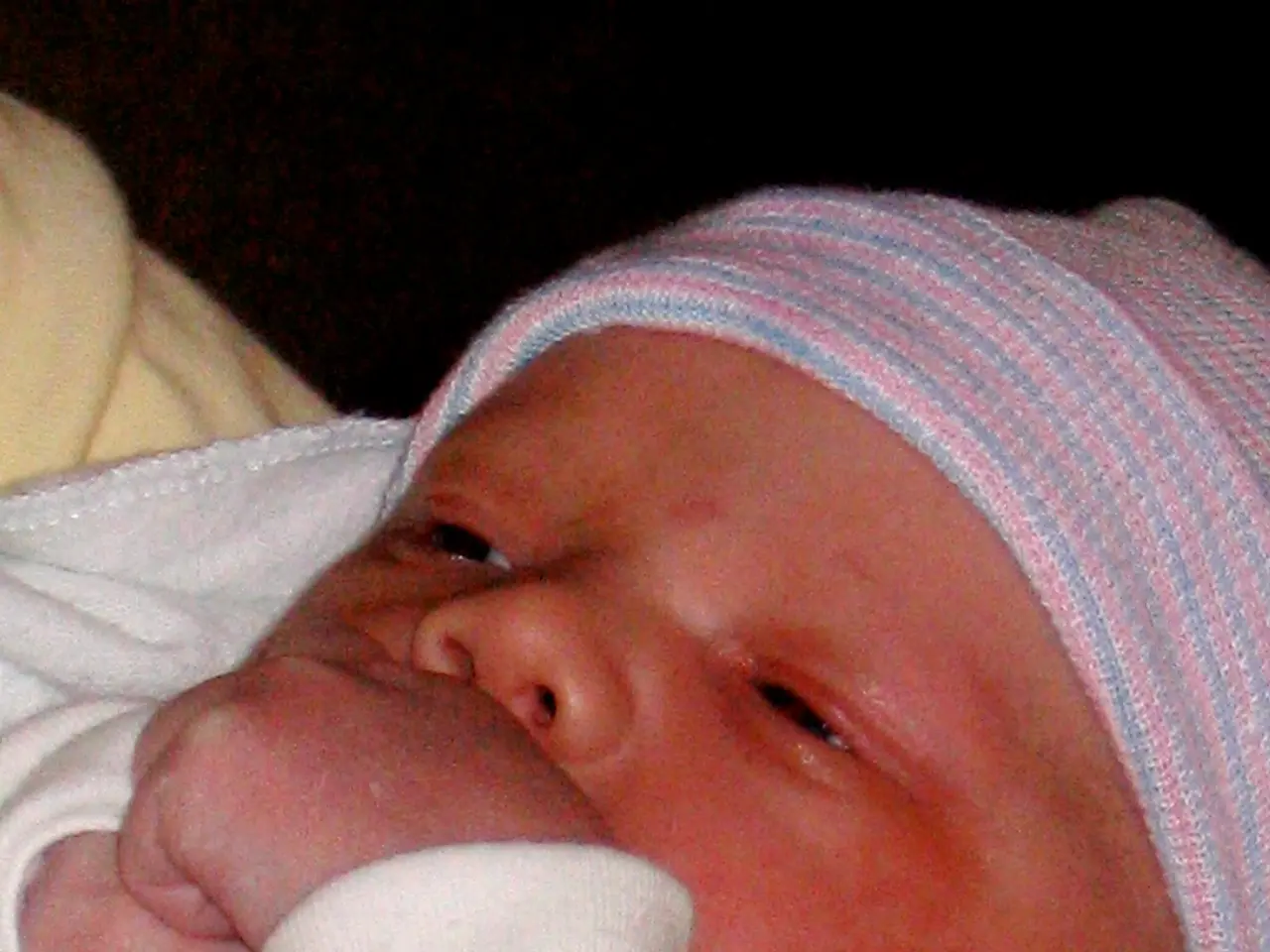Tongue Tie (Ankyloglossia) Exploration: Implications for Breastfeeding, Symptoms, and Additional Information
Tongue tie, also known as ankyloglossia, is a common condition that affects the mobility of the tongue. This condition is characterised by a shorter than usual strip of skin connecting the tongue to the bottom of the mouth, restricting tongue movement.
### Symptoms by Age Group
In infants, tongue tie can cause difficulties during breastfeeding, such as poor latch, nipple pain or damage for the mother, milk dribbling, excessive gas, colic, or reflux. The baby may tire or fall asleep during feeding prematurely, and may show poor or no weight gain. A heart-shaped or bow-shaped tongue tip may also be visible.
In children, symptoms can include restless sleep and mouth breathing due to low tongue posture, speech difficulties, slow or picky eating, choking or gagging on food or liquids, strong gag reflex, crowded teeth, narrow palate, teeth grinding at night, and snoring.
In adults, ongoing eating difficulties including chewing and swallowing, speech impediments, and oral hygiene challenges leading to dental issues can be signs of tongue tie.
### Treatment Options
Assessment involves a thorough evaluation of tongue function related to feeding, speech, and oral movement by a specialist or clinician trained in tongue tie assessment.
Conservative management may be appropriate for mild cases, where no treatment is necessary. In some cases, therapy such as speech therapy or lactation support may be helpful adjuncts.
Surgical treatments include frenotomy, frenuloplasty, and laser frenectomy. Frenotomy is a quick, minimally invasive procedure often done in infants, while frenuloplasty is a more involved surgery used for more severe cases or older children/adults. Laser frenectomy uses low-powered laser to sever the frenulum gently, minimising pain and bleeding, and healing within 2 hours.
Post-procedure, therapy and exercises may be recommended to improve tongue function and prevent reattachment after surgery.
### Importance of Early Intervention
Early diagnosis and intervention can significantly improve feeding, speech, and oral health outcomes, particularly in infants and young children. Untreated tongue tie in older children and adults can cause speech problems and issues when eating certain types of food.
It is important to note that only around half of those affected by tongue tie display significantly reduced tongue function that causes problems with feeding. Treatment for tongue tie is only necessary if it causes problems for the baby when feeding.
The strip of skin connecting the tongue to the bottom of the mouth is called the frenulum. In severe cases, the infant may not be able to stick their tongue out beyond their lower lip.
In conclusion, understanding tongue tie and its symptoms is crucial for early intervention and improved quality of life for those affected. Seeking professional advice from a specialist or clinician trained in tongue tie assessment is recommended for accurate diagnosis and appropriate treatment.
- Newborns with tongue tie may experience difficulties during breastfeeding, such as poor latch, nipple pain or damage, milk dribbling, excessive gas, colic, or reflux.
- A heart-shaped or bow-shaped tongue tip may be visible in newborns with tongue tie.
- In infants, tongue tie can lead to premature sleep during feeding and poor or no weight gain.
- Children with tongue tie may suffer from restless sleep and mouth breathing due to low tongue posture.
- Symptoms in children can also include speech difficulties, slow or picky eating, choking or gagging on food or liquids, strong gag reflex, crowded teeth, narrow palate, teeth grinding at night, and snoring.
- Ongoing eating difficulties, speech impediments, and oral hygiene challenges leading to dental issues can be signs of tongue tie in adults.
- Assessment of tongue tie involves a thorough evaluation of tongue function related to feeding, speech, and oral movement by a specialist or clinician trained in tongue tie assessment.
- Conservative management may be appropriate for mild cases of tongue tie where no treatment is necessary.
- Therapy such as speech therapy or lactation support may be helpful adjuncts for treating tongue tie.
- Surgical treatments include frenotomy, frenuloplasty, and laser frenectomy.
- Frenotomy is a quick, minimally invasive procedure often done in infants, while frenuloplasty is a more involved surgery used for more severe cases or older children/adults.
- Laser frenectomy uses low-powered laser to sever the frenulum gently, minimizing pain and bleeding, and healing within 2 hours.
- Post-procedure, therapy and exercises may be recommended to improve tongue function and prevent reattachment after surgery.
- Early diagnosis and intervention can improve feeding, speech, and oral health outcomes for infants and young children.
- Untreated tongue tie in older children and adults can cause speech problems and issues when eating certain types of food.
- Only around half of those affected by tongue tie display significantly reduced tongue function that causes problems with feeding.
- The strip of skin connecting the tongue to the bottom of the mouth is called the frenulum.
- In severe cases, the infant may not be able to stick their tongue out beyond their lower lip.
- Understanding tongue tie and its symptoms is crucial for early intervention and improved quality of life for those affected.
- Seeking professional advice from a specialist or clinician trained in tongue tie assessment is recommended for accurate diagnosis and appropriate treatment.
- Proper weight management, cardiovascular health, skin care, and mental health should also be considered during the treatment and management of tongue tie.








